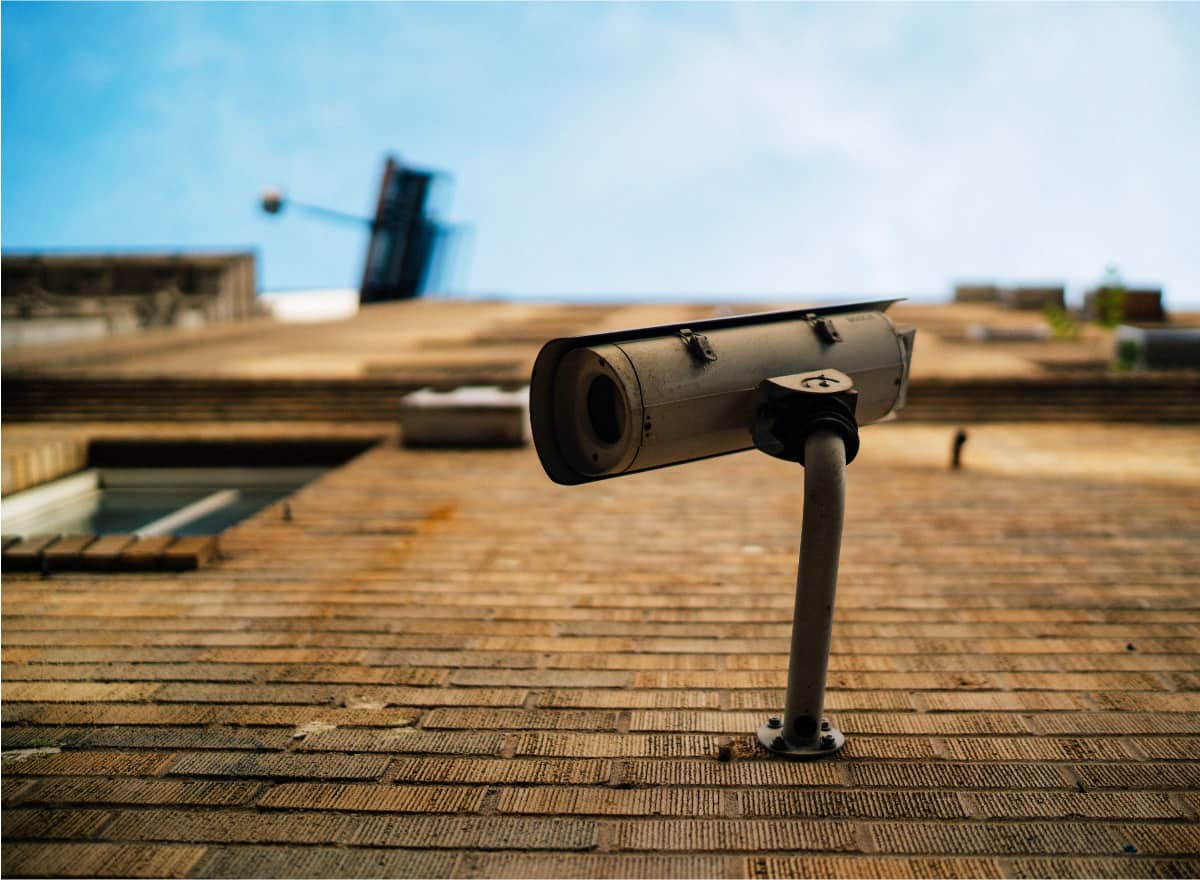We hereby identify six embassy attacks that we believe have played a crucial role in shaping how governments today view the protection of their consulates.
As symbols of the nations they represent, embassies are more than just diplomatic missions: they are also targets for anyone who harbors resentment – peaceful or otherwise – against countries flying their flags abroad. Specifically, six attacks have redefined embassy security around the world.
With the rise of fundamentalist terrorism over the past three to four decades, interest in embassy security has grown, as embassies have become targets for violent attacks.
Embassies were once lightly guarded and had minimal military or physical protection. After foreign ministries took note of revised risk assessments, many embassies – but not all – have been equipped with a wide range of protection measures. There are many reasons for this development, but we particularly believe that the six embassy attacks below have played a role in redefining how governments view the protection of their consulates.
As you will see, all attacks exploited vulnerabilities in the embassy’s perimeter, shell, and cell protection. Many had deadly consequences not only for the attacked embassy but also for surrounding buildings and their occupants.
1. The U.S. Embassy in Iran, November 4, 1979, to January 21, 1981
The Iran hostage crisis is one of the most well-known diplomatic crises in the world. Iranian students and supporters of the Iranian Revolution stormed the U.S. Embassy in Tehran and held 52 American diplomats hostage for 444 days. The hostage-taking was seen as a response to the U.S. granting asylum to the recently deposed Shah of Iran.
The attack can be seen as a “brutal show of force”: The embassy was stormed by between 300 and 500 students. The chains locking the embassy gates were broken using a pair of metal cutters hidden under a student’s chador (a traditional Iranian cloth worn by practicing Muslim women). No explosives were used – it was a simple takeover where the attackers overwhelmed security measures.
After numerous negotiations and a failed rescue attempt by the U.S., an agreement was finally reached, leading to the release of the hostages.
2. The U.S. Embassy in Beirut, April 18, 1983
The bombing of the U.S. Embassy in Beirut by radical Islamic groups was at the time a deadly attack on an American diplomatic building. It was also one of the first times a car bomb was used to attack a U.S. building abroad.
Motivated by U.S. intervention in the Lebanese Civil War, the attack killed 63 people – including 32 Lebanese employees and 14 visitors/passersby.
A van packed with almost a ton of explosives was detonated by a suicide bomber who gained access to the embassy.
The van crashed in front of the embassy itself and exploded. There were not only significant casualties; there was also an enormous amount of structural damage. The building’s central facade collapsed, hurling debris, metal, and glass fragments. Windows shattered as far as a kilometer away from the blast site, injuring even more people.
The attack had such an impact that it prompted the CIA to review security measures at diplomatic locations abroad.
The results of the review, called the Inman Report, led to improved security at embassies worldwide and the establishment of the Bureau of Diplomatic Security and Diplomatic Security Service.
3. U.S. Embassies in Tanzania and Kenya, August 7, 1998
This was not a single attack but simultaneous attacks in Dar Es Salaam and Nairobi. The attacks were considered revenge for the U.S. arrest and extradition of members of the Egyptian Islamic Jihad (EIJ).
The number of casualties was enormous: 213 died in Nairobi and 11 in Dar Es Salaam – with over 4,000 wounded in Nairobi. Seismological analyses of the explosions showed that multiple tons of explosives were used.
The attacks involved trucks loaded with explosives. In Dar Es Salaam, a corner of the embassy collapsed in an area where cars were parked, and embassy employees were trapped under rubble inside the building itself. The nearby French and German embassies were also damaged, but no one was injured.
In Nairobi, the attack was far more devastating. The drivers forced their way onto the embassy grounds using a stun grenade and weapons to clear a path for the truck. The explosion not only severely damaged the embassy building but also led to the collapse of the nearby Ufundi building, where students and staff of the college resided. The blast shattered windows as far as 10 blocks away.
While the Dar Es Salaam embassy was eventually repaired, the Nairobi building had to be rebuilt and relocated entirely.
4. Australian Embassy in Indonesia, September 9, 2004
Like the attack in Beirut, this was a suicide bombing using a ton of explosives.
Carried out by a jihadist in retaliation for Australia’s involvement in the Iraq War and in Indonesia, it killed 9 people and injured over 150.
This attack was particularly shocking because the explosion of the white van outside the embassy’s gates did more damage to nearby buildings than to the embassy itself.
The Greek embassy was, to quote newspapers from the period, “cleaned out.” The Chinese embassy also suffered minor damage. Several office buildings around the embassy were marred by the explosion, and shattered glass from broken windows injured many workers – like in the other aforementioned suicide bombings.
A warning about the explosion via SMS was sent to Indonesian authorities 45 minutes before the attack: Unfortunately, the message was only seen several hours after the detonation.
5. U.S. Embassy in Yemen, September 17, 2008
The attack on the U.S. Embassy in Yemen on September 17, 2008, is considered an example of a sustained attack on a diplomatic building. The attack resulted in 18 deaths and 16 injuries.
Carried out by the Islamic Jihad in Yemen (an affiliate of Al-Qaeda), the attackers were dressed as policemen to deceive local law enforcement and security. The assailants were heavily armed with rocket-propelled grenades, regular grenades, and rifles, and were – according to some reports – backed up by snipers across the road.
While the armed men led the attack on the outer security ring of the embassy, located approximately 250 meters from the embassy itself, car bombs exploded farther down the road. The goal was to blast through another security ring and create an opening for the attackers to penetrate the embassy’s grounds. The fight lasted about 20 minutes, and up to five different explosions were recorded.
6. Danish Embassy in Pakistan, June 2, 2008
The Danish embassy in Islamabad suffered from a car bomb in retaliation for the publication of Jyllands-Posten’s Muhammad cartoons, released two years earlier, and prior to the deployment of Danish troops in Afghanistan.
Over 20 were injured, and 6 were killed. The suicide bomber drove a car at high speed and then braked sharply, detonating his bomb in front of the embassy. While the quarter was allegedly “closely secured,” the attacker bypassed security because of the car’s diplomatic registration plate.
The embassy suffered severe structural damage, and the explosion was powerful enough to leave a large crater near the building.
The damage was shared between the Danish embassy itself and a Pakistani development organization’s building. Other offices and residences were also affected by the attack. For example, the windows of the Indian ambassador’s residence were shattered, and the building’s walls cracked.

What Can We Learn About Embassy Security from these 6 attacks?
Those responsible for protecting diplomatic missions can learn important lessons about embassy security from these and other terrorist attacks.
Although a range of attack methods was used—from the overwhelming force of a large mob in Tehran to remotely detonated bombs, suicide bombers, ballistic attacks, or a combination of several methods—all attacks were facilitated by vulnerabilities in perimeter protection.
Similarly, the protection of shells and cells also played a role in all attacks. Regardless of how structural damage to the attacked building resulted in loss of life or injuries, improved protection of the building’s exterior could have prevented such deadly consequences.
Since embassies are located in capitals, often in densely populated urban areas, an attack on a building can easily affect neighboring buildings. Blast damage to nearby structures is a recurring theme in several of the attacks described above; a majority of injuries caused by bomb attacks come from shattered window glass.
Better physical protection through integrated enhancement of perimeter, shell, and cell security cannot, of course, prevent all forms of damage from embassy attacks, but we believe it can greatly contribute to making embassies and their neighbors safer and more resilient.
Better physical protection of embassies begins with a good threat assessment. In this ever-changing world, it is crucial that these are up-to-date. Based on an accurate understanding of current threat levels, embassy security officials must then conduct thorough vulnerability and consequence analyses to identify any weaknesses and likely consequences if an attacker exploits these.


